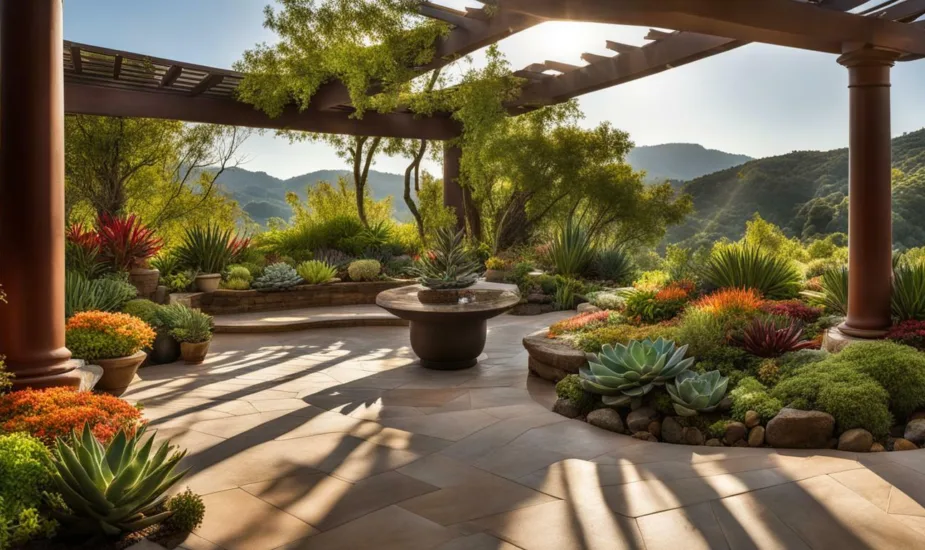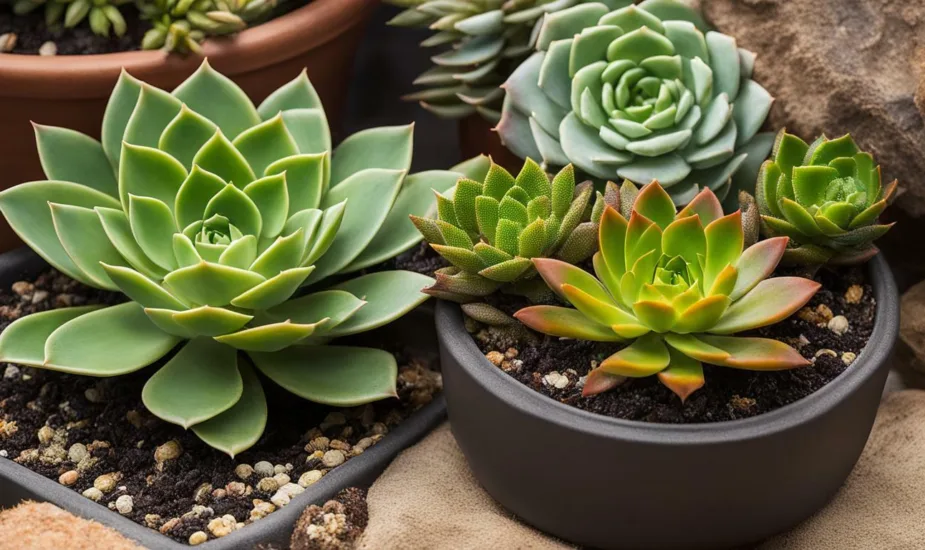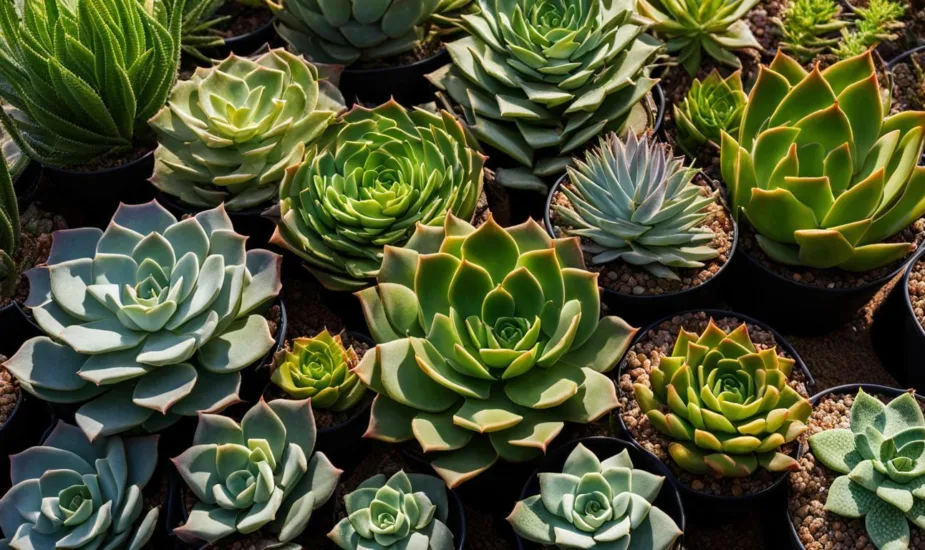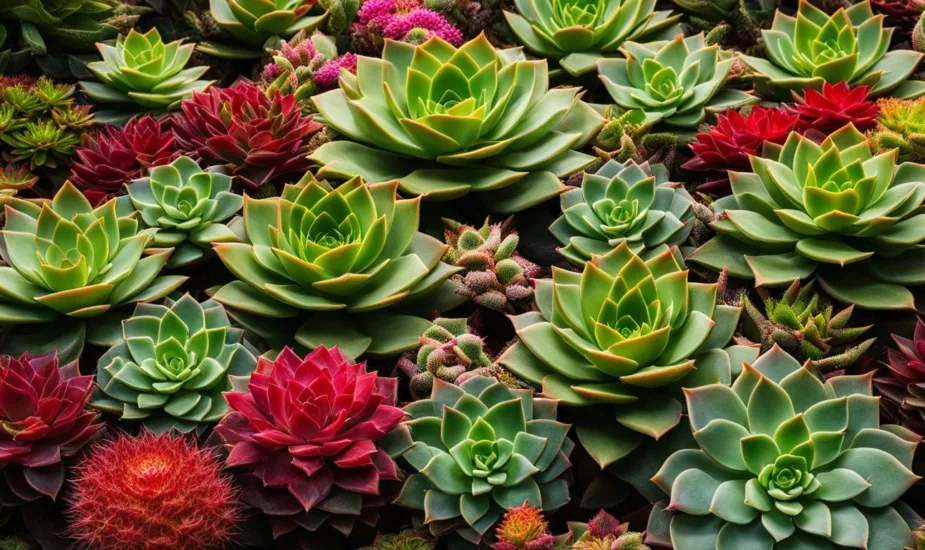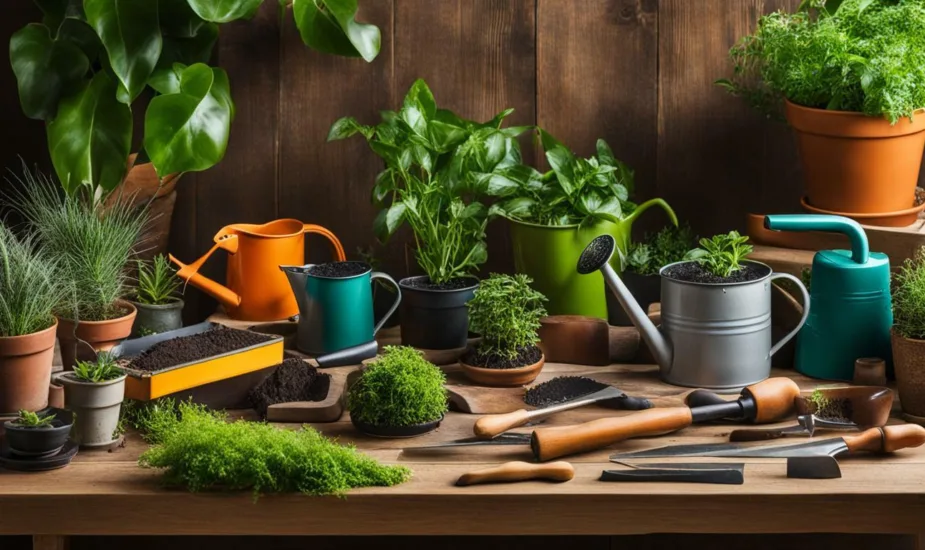Growing Plumeria in Pots: Expert Tips for Healthy Blooms

Hello, fellow gardening enthusiasts! If you’re looking to create a lush tropical paradise in your own backyard or on your balcony, plumeria plants are an excellent choice. Not only do they produce stunning, fragrant blooms, but they’re also relatively easy to grow and care for. In this article, I’ll be sharing my expert tips on how to grow plumeria in pots for healthy and vibrant flowers.
Key Takeaways:
- Growing plumeria in pots allows for flexibility, mobility, and better control over growing conditions.
- The right pot size, potting mix, and watering techniques are essential for successful growth.
- Plumeria plants need adequate sunlight exposure, both indoors and outdoors, to thrive.
- Proper pruning, maintenance, fertilization, and pest control are vital for healthy and continuous flowering.
Why Grow Plumeria in Pots?
As a passionate gardener, I love exploring different ways to grow plants and enjoy their beauty. And one of my favorite ways to grow plumeria is in pots. There are many advantages to container gardening with plumeria that make it a popular choice for enthusiasts and experts alike.
First and foremost, growing plumeria in pots allows for flexibility and mobility. You can move your potted plumeria plants around your garden or patio to show off their blooms or to provide them with different levels of sun exposure throughout the day. Additionally, container gardening gives you better control over the growing conditions, including the soil quality, fertilizer, and water supply. This control enables you to adjust the growing conditions to better meet the specific needs of your plumeria plants.
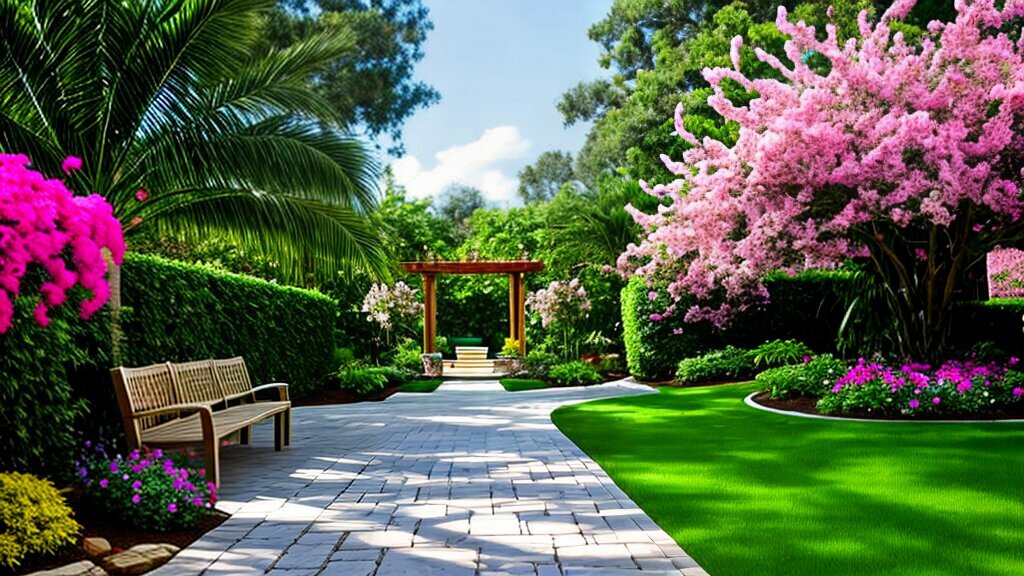
Another advantage of growing plumeria in pots is that it allows you to create a tropical paradise in your home, anywhere in the United States, regardless of your climate. If you live in a colder climate, you can still experience the beauty of plumeria blooms by growing them in pots indoors during the winter months.
Choosing the Right Pot for Plumeria
When it comes to growing plumeria in pots, selecting the right pot size is crucial for the plant’s health and growth. The pot should be spacious enough to accommodate the plant’s roots while allowing for proper drainage. A too-small pot will stunt the plant’s growth and limit its blooming potential, while a too-large pot can lead to waterlogging and root rot.
So, what size pot is ideal for plumeria? A pot with a diameter of around 12-14 inches and a depth of 12-14 inches is a good starting point for a mature plumeria plant. However, keep in mind that the plant’s size and the climate of your location can affect the pot size requirements.
Another essential factor to consider when choosing a pot for plumeria is drainage. Make sure your pot has drainage holes at the bottom to prevent excess moisture retention, which can lead to root rot. You can also add a layer of gravel or broken pieces of terracotta at the bottom of the pot to enhance drainage.
| Potting Tip: | To determine whether your plumeria needs to be repotted, inspect its roots. If the roots are circling on the bottom or sides of the pot, it’s time to move into a larger container. |
|---|
Finally, the material of the pot can also impact the plant’s health and growth. Clay or terracotta pots are excellent options for plumeria, as they allow for better airflow and drainage. Plastic pots, on the other hand, can retain moisture and heat, which can damage the roots. Regardless of the material, make sure to clean your pot before placing your plumeria in it to prevent the spread of diseases or pests.

Choose a pot that is appropriately sized, well-draining, and made of clay or terracotta for optimal growth and health of your plumeria plant. Don’t forget to inspect the roots periodically to determine when repotting is necessary.
Picking the Perfect Potting Mix
Choosing the right potting mix is crucial to the health and growth of your plumeria plants. The perfect potting mix should provide excellent drainage while also retaining enough moisture to ensure proper root growth and development.
A well-draining soil mix combined with organic matter and perlite is ideal for plumeria plants. You can create your own mix by combining equal parts of sand, peat moss, and perlite. Alternatively, you can purchase a pre-made potting mix specifically formulated for plumeria plants.
When potting your plumeria plants, make sure to fill the pot with the potting mix up to about an inch below the rim to allow for watering. Tamp the soil lightly, but don’t compact it too much, as this can hinder drainage.
It’s important to note that plumeria plants are sensitive to over-fertilization. Therefore, avoid using potting mix with added fertilizers or slow-release fertilizers. Instead, opt for a basic potting mix and fertilize as needed with a balanced fertilizer during the growing season.

Watering Plumeria in Pots
Proper watering is crucial for the health and growth of plumeria plants grown in pots. Overwatering or underwatering can cause root rot or dry, wilted leaves, respectively. The key is to maintain consistent moisture levels without letting the soil become waterlogged.
The frequency of watering plumeria plants in pots depends on various factors such as pot size, soil type, and environmental conditions like temperature and humidity. As a general rule, it’s best to wait until the top inch of soil feels dry to the touch before watering. You can also use a moisture meter to accurately gauge the moisture levels in the pot.
When you water plumeria plants in pots, water thoroughly until you see water draining out of the pot’s drainage holes. This will ensure that the roots receive enough moisture. Avoid letting the pot sit in a saucer of water, as this can cause the soil to become waterlogged and lead to root rot.
During hot and dry weather, plumeria plants may require more frequent watering. Conversely, during cold and damp weather, they may need less water. It’s important to monitor the soil’s moisture levels and adjust your watering frequency accordingly.
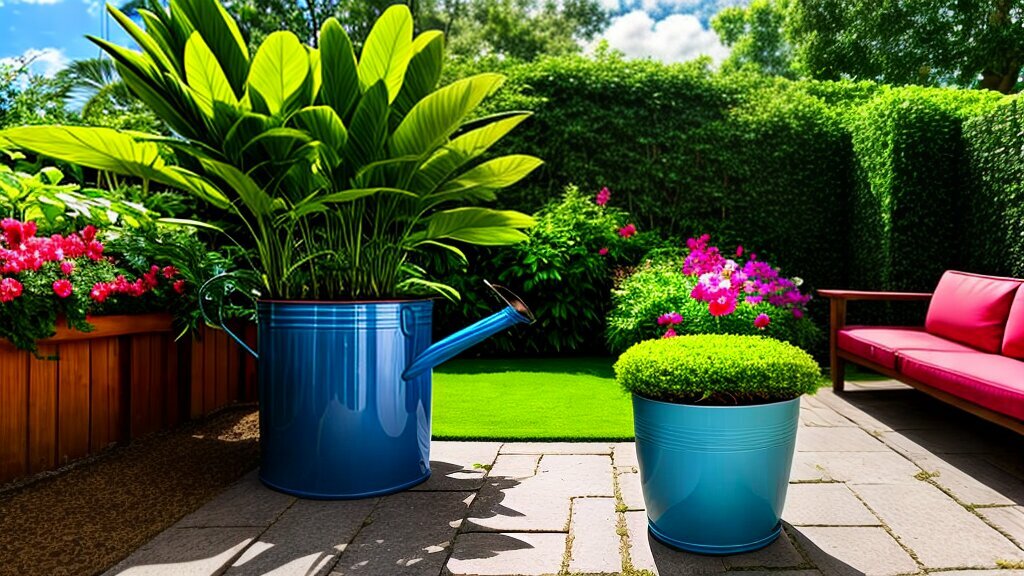
One common mistake people make when watering plumeria plants in pots is mistaking wilting leaves as a sign of dehydration. While wilting leaves can indicate a lack of water, they can also be a sign of overwatering or other issues. Always check the soil’s moisture levels before watering.
By following the proper watering techniques and adjusting your watering frequency based on your plumeria plants’ needs, you can ensure healthy growth and vibrant blooms.
Ensuring Adequate Sunlight Exposure
As plumeria plants require plenty of sunlight to thrive, you must position them in a spot where they receive at least six hours of direct sunlight per day. However, keep in mind that too much sun can dry out the soil and damage the plant.
When growing plumeria in pots, you have the advantage of being able to move them around to find the perfect spot with the right amount of sun exposure. You can place the pots in areas that get partial sun or use shade cloth to filter the sunlight if needed.
It’s also essential to rotate the pots once every two weeks to ensure all sides of the plant receive equal sunlight exposure. This helps prevent the plant from leaning towards the sunlight and promotes balanced growth.
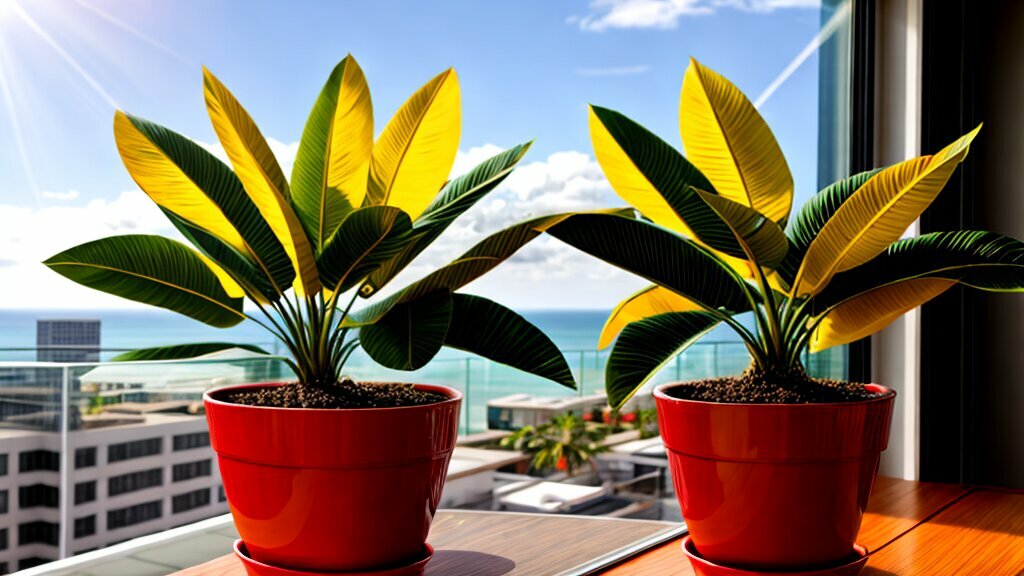
Tip: Avoid placing plumeria pots near windows with cold drafts during the winter months. This can cause the plant to go into dormancy and lose leaves.
Indoor Plumeria Care
As much as we love basking in the beauty and fragrant blooms of plumeria plants outdoors, they also make excellent indoor plants. Whether you live in a colder climate or don’t have a backyard, growing plumeria in pots indoors can be a perfect way to enjoy the tropical paradise in the comfort of your home. But just like outdoor plumeria care, indoor plumeria care requires attention to detail and consistent care to ensure healthy growth and blooming. Here are some tips to help you care for your indoor plumeria plants:
- Light: Plumeria plants require plenty of direct sunlight to thrive. When grown indoors, they ideally need around six hours of sunlight daily. Locate them near a sunny window, preferably a south-facing one, that receives plenty of light throughout the day. Consider using grow lights if your home doesn’t receive enough sunlight.
- Temperature and Humidity: Plumeria plants prefer warm temperatures between 65-85°F and high humidity levels. Keep them away from cold drafts, air conditioning units, and heaters. You can increase humidity by misting the leaves or placing a tray of water near the plant to promote moisture in the air.
- Watering: When growing plumeria indoors, it’s crucial to avoid overwatering. Allow the soil to dry out between watering sessions, and then water thoroughly until it drains through the pot’s bottom. Ensure your pot has proper drainage holes to prevent water logging, which can lead to root rot.
- Fertilizing: Indoor plumeria plants need regular fertilizing to grow healthy and vibrant blooms. Use a balanced fertilizer like 10-10-10 or 20-20-20, diluted at half the recommended strength, every 2-3 weeks during the growing season. Stop fertilizing in late fall and winter when the plant is dormant.
- Pruning: Regular pruning is necessary to maintain the shape and size of your indoor plumeria plant. Prune back any leggy or overgrown branches, diseased or dead branches, or branches rubbing against each other. Always use sterilized pruning shears to avoid transmitting diseases.

With proper care and attention, your indoor plumeria plants can thrive and bloom beautifully, adding a tropical ambiance to your home. Remember to keep them in a well-lit area, maintain proper temperature and humidity levels, water appropriately, fertilize regularly, and prune as needed to keep them healthy and vibrant.
Potting Plumeria Seedlings
When it comes to potting plumeria seedlings, it’s important to ensure the right environment for healthy growth. Firstly, select a pot that is about 3 inches in size, and consider using a soil mix that includes organic matter and perlite for improved drainage.
Next, fill the pot with your chosen soil mix and make a small hole in the center. Gently place the plumeria seedling in the hole, ensuring the roots are spread out and not tangled.
Once you have positioned the seedling in place, add more soil mix around it, ensuring you don’t cover the stem or leaves. Lightly tamp down on the soil to remove pockets of air and firm up the plant in the pot.
After the potting process, water the seedling thoroughly but avoid overwatering. Keep the pot in a warm, brightly-lit area and wait for the seedling to establish roots before moving it to a larger pot.
Remember, young plumeria plants require special care and attention, so be sure to fertilize them regularly and monitor their growth closely. With the right care, your potted plumeria will soon be thriving and producing beautiful blooms.

Fertilizing Plumeria in Pots
Fertilizing your plumeria plants in pots is an essential aspect of their care. As they grow and produce blooms, they require a regular supply of nutrients to thrive.
The best time to fertilize plumeria in pots is during their active growing season, typically from spring to early fall. During this time, fertilize your plants every two weeks with a balanced fertilizer that contains equal parts of nitrogen, phosphorus, and potassium.
When applying fertilizer, it’s essential to follow the instructions carefully and avoid over-fertilizing, as it can lead to nitrogen burn and damage to the roots. Always water your plants well before and after fertilizing to prevent root damage.
In addition to a balanced fertilizer, you can also use a slow-release fertilizer, which provides a steady supply of nutrients over an extended period. This type of fertilizer is especially suitable for indoor plumeria plants, as they require less frequent feeding.
Remember, plumeria plants grown in pots have limited access to natural nutrients, so regular fertilization is crucial for their health and blooming.

Tip: Avoid fertilizing your plumeria plants in winter, as they enter their dormant phase and do not require additional nutrients during this time.
Pruning and Maintenance
Pruning and maintaining your plumeria plants is crucial to ensure healthy growth and continuous blooming. Regular pruning can promote branching and enhance the overall shape of the plant. It is recommended to prune during the dormant season, typically in late winter or early spring.
To prune, use sharp, sterile pruning shears to remove any dead or damaged branches. Cut at a 45-degree angle, about half an inch above a leaf node or bud. This will encourage new growth and prevent the spread of pests and diseases.
In addition to pruning, it is important to maintain the overall health of your plumeria plants. Regular watering and fertilizing can help promote growth and blooming. You can use a balanced fertilizer with a 2:1:2 or 3:1:3 ratio of nitrogen, phosphorus, and potassium, respectively. Apply fertilizer every four to six weeks during the growing season, and reduce or stop fertilizing during the dormant season.
Additional Tips for Plumeria Care
- Keep your plumeria plants well-drained, and avoid standing water in the pot.
- Protect your plants from extreme temperatures and frost, as they prefer warm and humid conditions.
- Use a well-draining potting mix, and avoid using heavy, clay-based soil.
By following these pruning and maintenance tips, you can ensure your plumeria plants thrive in their pots and provide you with vibrant blooms for years to come.

Pest and Disease Control
As much as we love our plumeria plants, they are not immune to pests and diseases. Fortunately, with proper care and attention, you can prevent and manage many common problems that may affect your potted plumeria.
Aphids are sap-sucking insects that may infest your plumeria leaves and flowers. They can be identified by their green, yellow, or black bodies, and they can cause discoloration and distortion of the affected tissues. To control aphids, you can spray your plumeria with a mixture of water and dish soap, or use an insecticidal soap or oil. You can also introduce natural predators, such as ladybugs or lacewings, to your garden, as they feed on aphids and other pests.
Spider mites are tiny arachnids that may also attack plumeria leaves and cause yellowing, speckling, and premature leaf drop. They thrive in hot and dry conditions and can be difficult to control. To prevent spider mites, you can mist your plumeria regularly and avoid keeping them in areas with low humidity. You can also use a miticide or insecticidal soap, but be careful not to apply it when the temperatures are too high, as it can damage your plants.
Fungal diseases are another potential threat to your plumeria, especially in humid and damp conditions. One common disease is black tip, which causes blackened and withered tips on the leaves and branches. To prevent fungal diseases, you should avoid overwatering or splashing water on the leaves, as well as overcrowding your pots. You can also apply a fungicide spray to your plumeria, following the instructions carefully.
Remember to inspect your plumeria regularly for signs of pests and diseases, and take action promptly if you notice any issues.
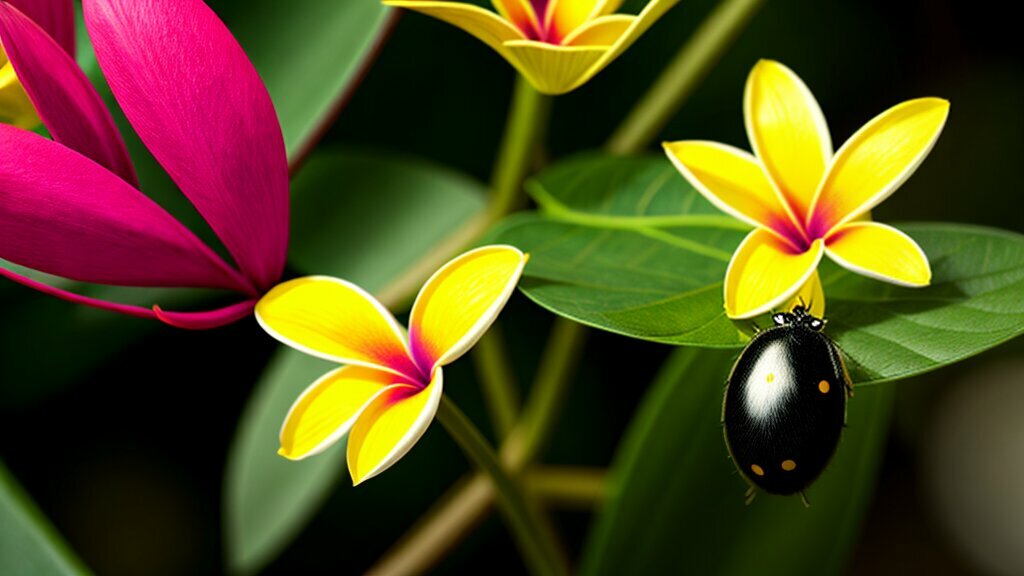
Conclusion
In conclusion, growing plumeria in pots offers many advantages for creating a beautiful and manageable tropical paradise at home. By following the expert tips provided in this article, you can enjoy healthy blooms year after year.
Remember to choose the right pot size, potting mix, and watering techniques for optimal growth. Ensure adequate sunlight exposure and consider indoor care if necessary. When potting plumeria seedlings, be mindful of their specific requirements as young plants.
Fertilize your plumeria according to the appropriate timing and methods to prevent damage and promote healthy growth. Pruning and maintenance practices are essential for promoting longevity and continuous flowering.
Lastly, be aware of common pests and diseases that may affect plumeria plants and take preventive measures or treatments if necessary.
I hope this article has been informative and helpful in your journey to grow plumeria in pots. With proper care and attention, you can create a beautiful and thriving tropical oasis in your own home.
FAQ
Q: Why should I grow plumeria in pots?
A: Growing plumeria in pots offers several advantages, including flexibility, mobility, and better control over the growing conditions. It allows you to move your plants around as needed and provides an opportunity to create an ideal environment for their growth.
Q: How do I choose the right pot for plumeria?
A: When selecting a pot for plumeria, consider the optimal pot size, drainage requirements, and materials. A pot with good drainage is essential to prevent waterlogging, and choosing a size that accommodates the plant’s root system will promote healthy growth.
Q: What potting mix should I use for plumeria?
A: The perfect potting mix for plumeria should consist of well-draining soil, perlite, and organic matter. This combination provides the necessary nutrients, aeration, and moisture retention for the plant’s root development and overall health.
Q: How should I water plumeria in pots?
A: Proper watering techniques for plumeria in pots involve maintaining the right moisture levels. Avoid overwatering or underwatering by allowing the top inch of the soil to dry out between waterings and ensuring adequate drainage in the pots.
Q: How can I ensure adequate sunlight exposure for potted plumeria?
A: Position your plumeria pots in an area where they receive optimal sunlight exposure. Plumeria plants require at least 6 hours of direct sunlight each day. Consider factors like the direction of light and any obstacles that may shade the plants.
Q: How should I care for plumeria plants indoors?
A: Indoor plumeria care involves providing the necessary temperature and humidity preferences, as well as adequate light and air circulation. Place the plants near a sunny window and monitor the indoor environment to ensure the plants thrive.
Q: How do I pot plumeria seedlings?
A: Potting plumeria seedlings requires selecting an appropriate pot size, using a well-draining potting mix, and providing proper care. The pot should be large enough to accommodate the seedling’s root system, and the mix should promote healthy growth.
Q: How do I fertilize plumeria in pots?
A: Fertilizing plumeria in pots involves timing, types of fertilizers, and application methods. Apply a balanced fertilizer during the active growing season, following the manufacturer’s instructions. Avoid over-fertilization, as it may harm the plants.
Q: How do I prune and maintain potted plumeria plants?
A: Pruning and maintenance are essential for the health and continuous flowering of potted plumeria plants. Prune during the dormant season, removing dead or diseased branches, and provide general care practices such as regular watering and fertilizing.
Q: How can I control pests and diseases in potted plumeria plants?
A: Common pests and diseases that may affect potted plumeria plants can be controlled through preventive measures and treatment options. Regularly inspect your plants for signs of pests or diseases, and take appropriate actions such as using organic insecticides or fungicides.
 Little Garden Tips
Little Garden Tips




